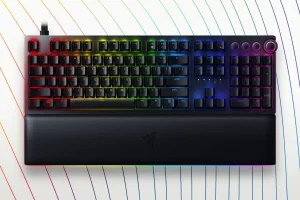Augmented reality brings digital information to the user’s eyes via smartphones or headsets, overlaying it on their view of the real world. From virtual try-on solutions to augmented maps and directions, AR is becoming ubiquitous in consumer markets.
But AR is also revolutionizing other industries, from museums and art galleries to construction sites. Archeologists working on dinosaur skeletons can leave notes for their colleagues on the bones, and surgeons use AR to visualize patient X-rays.
How AR is Revolutionizing Mobile Experiences
Augmented reality works by scanning the physical world and then overlaying digital information. The digital information is typically text, images or animations. Sophisticated AR programs can also include machine vision and object recognition.
AR applications are expanding into a wide variety of industries. For example, retailers are using it to allow customers to try on clothes or view products in their homes before buying. AR also has the potential to reduce return rates and increase conversions.
AR is transforming how people visit attractions like museums, art galleries and amusement parks. For example, it can transport visitors back in time to see what Pompeii looked like before it was buried in volcanic ash or let them walk around an ancient temple with animatronics and virtual guides.
Retail
AR delivers digital information via a device like a smartphone, glasses or headset that alters a person’s perception of the real world. It can be used in education, allowing students to experience simulated scenarios, and for manufacturing, enabling workers to receive step-by-step instructions or to see how their products look when assembled.
In retail, superimposition AR displays product information over a store’s existing environment, and it can be used to gamify experiences by creating virtual scavenger hunts. Similarly, brands can use location-based AR to deliver content to specific locations. Pokémon GO is one example of this type of AR.
Health care will also benefit from mobile AR. For instance, there is an app called AccuVein that can show doctors and nurses where their patients’ veins are located for faster and safer injections.
Education
Augmented reality involves using a smartphone, glasses or headset to superimpose digital information over a physical environment. That can change how the environment looks, add to it or mask parts of it.
AR offers many educational experiences that boost learning and engage audiences. For example, a company called Layar allows customers to point their phones at a piece of furniture to see how it would look in their home. This helps them make a more informed purchase decision.
Museums are also embracing AR. The Sanxingdui Museum in China has an augmented reality app that brings artifacts to life for visitors. And the Kennedy Space Center Visitor Complex has an augmented reality app that lets guests explore exhibits with information and videos. It can even take visitors back in time to see how a historic location looked at one point in the past.
Entertainment
Unlike VR, which requires a headset to immerse users in a computer-generated environment, AR overlays digital information on real-world elements. Its most famous example is Pokemon GO, which triggered global fascination in 2016.
With projection-based AR, an existing physical object or feature is partially or fully replaced with digital content. The technology can be used to create immersive experiences such as holograms at events or to display product labels and other data on flat surfaces, like products or store windows.
Other examples include virtual graffiti at a museum, construction workers using augmented reality to mark the location of structural supports, or doctors superimposing digital images on patients’ X-rays to highlight abnormalities. These applications help users learn and practice skills in a risk-free environment. They also help users step into the shoes of historical figures or explore cultural sites in a more intimate way.
Medical
While AR’s technology has gotten some bad press for things like the start-stop history of Google Glass (and its many imitators), it is helping medical professionals improve patient care.
For example, doctors can now overlay a patient’s vein structures for easier injections and other procedures. Using this device called AccuVein, they have a 39% reduction in pain and a 92% first-attempt success rate, compared to traditional methods that use trial and error.
Medical students can also learn more about anatomy using an AR app that superimposes a digital human body. It allows them to see internal structures and organs in a way that would be impossible with a textbook or without shadowing tenured clinicians. It can also help patients understand their condition and treatment plans in a more clear way.












More Stories
The Benefits of Edge Computing and Distributed Systems
What Is Business Intelligence?
Best Cheap Phones for 2022